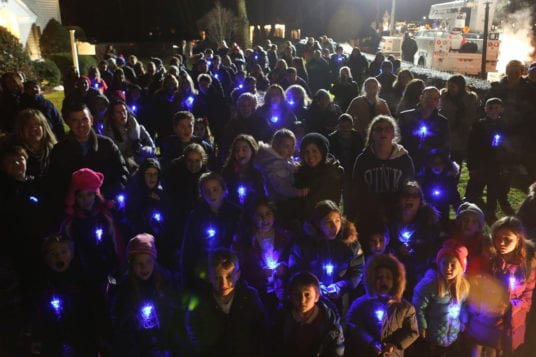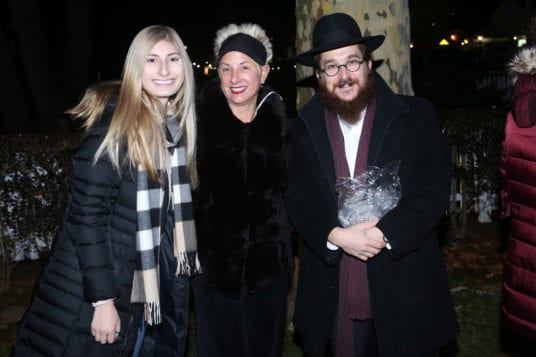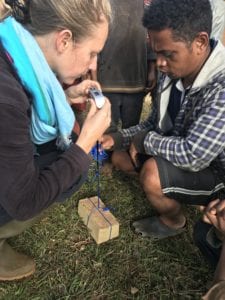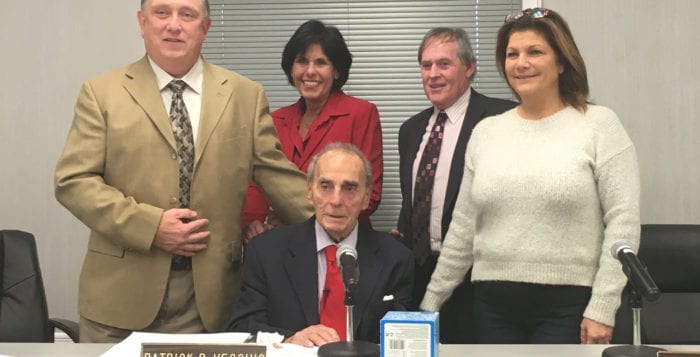By Heidi Sutton
In 2003, Theatre Three’s Douglas Quattrock and Jeffrey Sanzel sat down and wrote an adorable musical for children titled “Barnaby Saves Christmas,” about a little elf named Barnaby and a tiny reindeer called Franklynne who teach us that “Christmas lies within our hearts.” I recently had the opportunity to ask the two playwrights a few questions about the show that has become a beloved holiday tradition for families on the North Shore.
Can you believe it’s been 14 years?
DQ: No I can’t … it feels like just yesterday. I couldn’t possibly be getting that old!
What inspired you to write a holiday show for children?
JS: Doug conceived and created “Barnaby.” I had very little to do with its initial creation. He brought me a rough draft and the incredible score the summer before we premiered it. I was immediately taken by his terrific songs and I loved the idea of a holiday show that touched on another culture. During the fall, he continued to write and rewrite the show and went into rehearsal with it. It opened to great response and we knew we had our annual show.
Over the next several years, Doug and I worked on the book together, trading ideas, trying new things. Doug continued to add to the score and we have revised the show every year. The only thing that hasn’t changed is the beautiful score and the show’s great big heart — Barnaby and Franklynne are truly amazing holiday figures with as much character as Rudolph or Santa.
DQ: I have 13 nieces and nephews and I used to babysit when they were young and they would ask me to tell them bedtime stories. I used to make up stories for them, and one holiday season I started to tell them about a little elf and his reindeer friend. I always tried to put messages in the stories such as believing in yourself, believing that you can do anything, getting over fears and things like that.
They would get a little piece of the story at a time. Then I started writing songs to go along with that particular story and play them for the kids. Theatre Three always does “A Christmas Carol,” and that is a little scary for the young ones, and I wanted to offer a holiday show for the children. When I spoke to Jeff about the idea, he loved it and encouraged me to give it a shot. I was much more confident writing songs, which in themselves are stories, but writing an actual play was another thing. “Barnaby” was the first play I ever wrote and without Jeff’s extraordinary talent and guidance I don’t think I could have ever done it. His knowledge of theater and storytelling is second to none.
‘Barnaby’ is considered a Christmas story yet Hanukkah is very much a part of it. Why was it important to you to include the Festival of Lights in this story?
DQ: As people, I have always believed that we can all learn something from each other. Whatever your faith or beliefs, we are all here in this life together. We should respect and be open to others ways of living. The Festival of Lights celebrates a miracle and is a story of perseverance … not giving up. Barnaby and Franklynne are faced with a struggle at that point in the plot, and it struck me as the perfect opportunity to share that beautiful story. That’s where the song “Miracles” comes in.
JS: The fact that children get a small education on Hanukkah is an additional gift. We’ve had so many people thank us for adding that and finding the connection in the overall holiday spirit.
How does it make you feel when you hear the children laughing and see them enjoy the show?
DQ: It’s beyond gratifying and a little surreal. I love when the kids laugh and sing the songs on their way out of the theater.
What message did you hope to convey when you wrote this show?
DQ: The message of the story is really in some of the lyrics of the songs. “… Every day’s a golden opportunity to be better than you used to be…” “There are so many miracles that happen everyday” and lastly. “… Christmas lies within our hearts, The toys we give are just a sign of all the love we feel inside, and there’s enough to share for you and me.”
Theatre Three, 412 Main St., Port Jefferson will present “Barnaby Saves Christmas” on Dec. 23, 24, 28, 29 and 30 at 11 a.m. All seats are $10. To order, call 631-928-9100 or visit www.theatrethree.com.


































